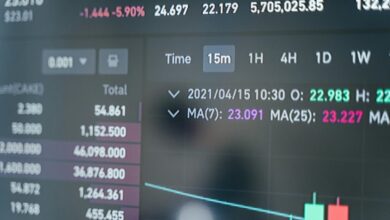Why Modern Teams Need Smart Time-Tracking Software

Remember when tracking work hours meant filling out paper timesheets at the end of the week, trying to recall what you did on Tuesday afternoon? Those days are thankfully behind us. Modern time-tracking software has evolved into a sophisticated tool that does far more than just count hours—it provides insights into employee productivity, streamlines project performance, and helps remote workforce management become seamless.
Take Controlio, for instance—a cloud-based time-tracking and employee monitoring SaaS platform that’s changing how businesses approach team efficiency. Unlike traditional punch-clocks, the Controlio software integrates work hours analytics with productivity insights, giving managers real-time data on how projects progress without micromanaging their teams. When I first started using good time-tracking solutions, the difference was night and day. Suddenly, project deadlines became predictable, and team members could see exactly where their time was going.
The modern workplace demands more than simple hour tracking. According to the 5 best time tracking apps of 2025 | Zapier, businesses are prioritizing solutions that offer AI automation, detailed data insights, and seamless integration with existing project management tools. This shift reflects a broader digital transformation in HR tech, where productivity analytics drive strategic decisions.
The Evolution of Workforce Time Management
Time-tracking software has become the backbone of effective remote workforce management. With hybrid and fully remote teams becoming the norm, companies need visibility into work patterns without invading privacy or creating a culture of surveillance.
Here’s what happened at a mid-sized marketing agency I consulted for: They were bleeding hours on client projects without understanding why. After implementing a comprehensive time-tracking solution, they discovered that 30% of their team’s time was spent in unnecessary meetings and context-switching between tools. Armed with this data, they restructured their workflows and increased billable hours by 22% within three months—without anyone working longer hours.
Comparing Top Solutions: Finding Your Perfect Match
The market offers several robust options, each with unique strengths. Toggl Track excels in simplicity and offers excellent free-tier features, making it ideal for freelancers and small teams. Clockify provides unlimited users on its free plan, which appeals to growing startups watching their budgets.
Meanwhile, Hubstaff and Time Doctor focus heavily on employee monitoring features—screenshot capture, activity levels, and URL tracking. These tools work well for companies with strict compliance tracking requirements or those managing fully remote teams across time zones.
Harvest stands out for agencies that bill clients hourly, offering seamless invoicing integration. But here’s where Controlio distinguishes itself: it combines the monitoring capabilities of Hubstaff with the analytics depth of Toggl, wrapped in an interface that doesn’t feel like Big Brother watching. The Controlio Tool provides cybersecurity features alongside productivity tracking, addressing two critical business needs simultaneously.
Real-World Impact on Team Efficiency
Let me share a personal example. As a project manager overseeing a distributed team of developers, I struggled with estimating sprint capacities. Developers would commit to tasks that consistently took 50% longer than estimated. Implementing time-tracking software wasn’t about policing their work—it was about gathering real data.
Within six weeks, patterns emerged. Database-related tasks always took longer than front-end work. Meetings scheduled during peak coding hours (10 AM to 2 PM) destroyed productivity for the rest of the day. Armed with these insights, we restructured sprint planning and moved collaborative sessions to early morning or late afternoon. Developer satisfaction improved, and velocity increased by 35%.
Key Features That Matter in 2025
When evaluating time-tracking software, look beyond basic hour logging. Modern solutions should offer:
AI-powered insights that identify productivity patterns and suggest workflow improvements. The best platforms learn from your team’s behavior and proactively highlight inefficiencies.
Integration capabilities with your existing project management, communication, and HR tech stack. Standalone tools create data silos that defeat the purpose of tracking time in the first place.
Mobile accessibility for teams that work across devices and locations. Field service teams, sales representatives, and remote workers need seamless tracking without being chained to a desktop.
Customizable privacy settings that balance employer needs with employee autonomy. The best solutions track productivity without capturing every keystroke or taking constant screenshots—that’s the approach that builds trust rather than resentment.
See also: Background:-Qrblsjw2vi= Technology
Addressing the Elephant in the Room: Employee Pushback
Let’s be honest—nobody likes feeling watched. When you introduce time-tracking software, expect resistance. I’ve seen this play out dozens of times across different organizations.
The key is transparency and framing. Position the tool as a resource for employees, not a weapon against them. Show how data insights help them work more efficiently, justify resource requests, and eliminate busywork. One company I worked with started by letting employees opt-in voluntarily for two weeks to see their own productivity patterns privately. The results were so eye-opening that within a month, 90% of the team had adopted it willingly.
The Security and Compliance Angle
In industries with strict regulatory requirements—healthcare, finance, legal—time-tracking software doubles as compliance tracking documentation. When auditors ask how you ensure proper oversight of client work or sensitive data access, robust work hours analytics provide concrete evidence.
The Controlio App, for example, includes SaaS security features that log not just time spent, but also application usage and data access patterns. This creates an audit trail that satisfies compliance officers while giving IT teams visibility into potential security risks before they become breaches.
Making Time-Tracking Work for Your Culture
Technology is only as effective as its implementation. I’ve seen powerful platforms fail because leadership treated them as surveillance tools rather than productivity enablers.
Start small. Pick one team or project for a pilot program. Focus on aggregate insights rather than individual monitoring. Share results openly and involve employees in interpreting the data. When team members discover they’re spending 40% of their time in email, they’re usually the first to suggest solutions.
Create a feedback loop. Use the data to eliminate genuine bottlenecks—not to punish slower performers. If someone consistently takes longer on certain tasks, that’s a training opportunity or a signal that workload distribution needs adjustment.
The Future of Workforce Analytics
As artificial intelligence continues advancing, time-tracking software is evolving into predictive workforce planning tools. Imagine systems that don’t just report where time went, but forecast project timelines based on historical patterns, automatically flag at-risk deliverables, and suggest optimal team compositions for upcoming work.
We’re already seeing early versions of this with platforms that integrate machine learning into their analytics engines. These tools identify subtle patterns human managers miss—like how certain task combinations create bottlenecks, or how team composition affects delivery speed.
Frequently Asked Questions
How does time-tracking software improve remote team productivity?
Time-tracking software provides visibility into work patterns without requiring physical presence. It helps remote teams stay accountable, allows managers to identify bottlenecks early, and creates data-driven insights for workflow optimization. The key is choosing solutions that track productivity indicators rather than just activity, focusing on outcomes rather than surveillance.
Can employees manipulate time-tracking data?
While basic time-tracking can potentially be manipulated, modern solutions like Controlio incorporate activity monitoring, application usage tracking, and automated verification systems that make falsification difficult. More importantly, building a culture of trust where accurate reporting benefits everyone reduces the incentive to manipulate data in the first place.
What’s the difference between time-tracking and employee monitoring software?
Time-tracking software primarily records hours spent on tasks and projects, focusing on work allocation and billing. Employee monitoring tools go deeper, capturing screenshots, keystrokes, application usage, and sometimes even webcam activity. The best modern solutions, like Controlio, blend both approaches with customizable privacy settings that balance oversight with respect for autonomy.
How much does quality time-tracking software typically cost?
Pricing varies widely based on features and team size. Basic solutions like Clockify offer free tiers suitable for small teams, while comprehensive platforms range from $5 to $20 per user monthly. Enterprise solutions with advanced analytics, AI features, and dedicated support can exceed $30 per user. Calculate ROI based on improved billable hours and reduced administrative overhead rather than just license costs.
Is time-tracking software legally compliant with privacy laws?
Compliance depends on how you implement the tool and your location’s regulations. In the EU, GDPR requires transparency about monitoring and legitimate business interests. In the US, requirements vary by state, but generally require employee notification. Always consult legal counsel when implementing monitoring tools, ensure clear policies, obtain written consent where required, and use the minimum necessary data collection to achieve your business goals.
Final Thoughts: Time is Your Most Valuable Asset
In an era where knowledge work dominates the economy, understanding how your team spends time isn’t optional—it’s strategic. The right time-tracking software transforms opaque workflows into clear, actionable insights that drive better decisions across your organization.
Whether you’re managing a remote workforce, trying to improve project performance, or simply want to understand where productivity leaks occur, modern solutions offer unprecedented visibility. Tools like Controlio represent the next generation of workforce analytics—combining time-tracking, productivity measurement, and security monitoring into unified platforms that respect both business needs and employee autonomy.
The question isn’t whether you should track time, but how you’ll use those insights to build a more efficient, satisfied, and successful team. Start with transparency, focus on aggregate patterns rather than individual surveillance, and use the data to remove obstacles rather than assign blame. That’s how time-tracking software becomes a tool for empowerment rather than enforcement.
Ready to transform how your team works? Explore comprehensive time-tracking software solutions that align with your culture and goals. The insights waiting in your team’s daily patterns might just be the competitive advantage you’ve been missing.



